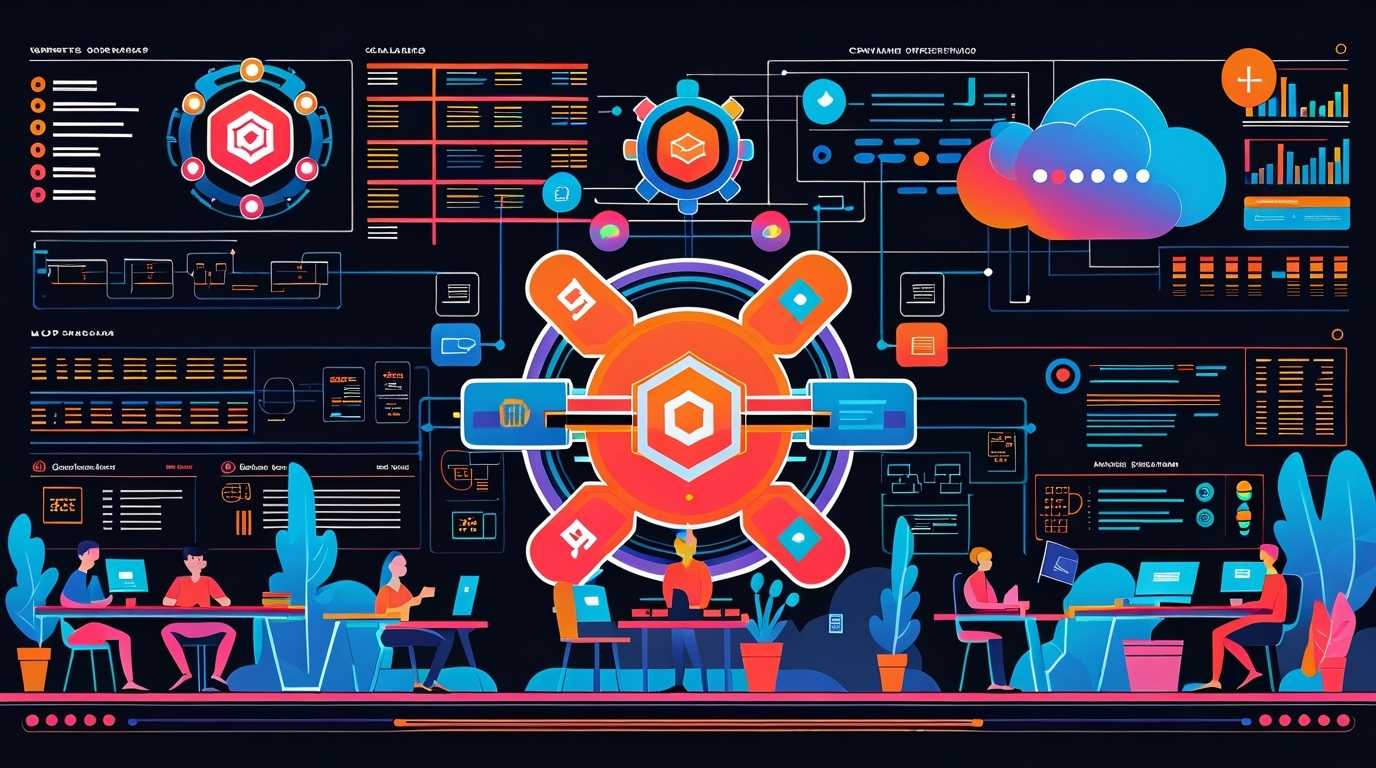Struggling with team miscommunications and endless update loops in your SaaS product? Real-time collaboration is no longer a luxury—it’s a necessity. If you want your users to work seamlessly together, you need features that minimize delays and maximize interaction. In this guide, we’ll break down the core real-time collaboration features every SaaS product should have to keep users engaged and productive.
Document Sync: Ensuring Seamless Multi-User Editing
One of the most vital aspects of real-time collaboration is document sync—the ability for multiple users to edit the same content simultaneously without conflicts or data loss. In SaaS products, this feature transforms static documents into dynamic works-in-progress, allowing teams to co-create, edit, and review content together, no matter their physical location.
Why Document Sync Matters
Without a reliable document sync, users face frustrating experiences: overwriting each other’s changes, delayed updates, or inconsistent document versions circulating within teams. These issues stall productivity and increase the likelihood of errors or duplicated effort.
How Document Sync Works
At its core, document sync relies on syncing changes in real time between clients and servers, resolving conflicts smartly. Two main strategies are widely adopted:
- Operational Transformation (OT): OT algorithms allow concurrent edits by transforming incoming changes against local edits to maintain consistency. Google Docs famously uses OT to provide seamless collaboration.
- Conflict-Free Replicated Data Types (CRDTs): CRDTs enable conflict-free merging of concurrent operations across distributed systems without needing central coordination, which is ideal for offline edits followed by sync.
Implementing Efficient Document Sync in SaaS
Modern SaaS platforms can leverage the following tools and frameworks to build scalable sync mechanisms:
- Firebase Realtime Database / Firestore: Provide real-time document sync capabilities with offline support, making implementation straightforward with out-of-the-box conflict resolution.
- ShareDB: An open-source OT-based real-time JSON document sync engine, perfect for custom collaboration solutions.
- Yjs: A CRDT implementation designed for building collaborative applications with low latency sync.
Tips for Optimizing Document Sync
- Minimize payload size: Sync only the deltas or changes instead of entire documents.
- Optimize conflict resolution: Choose algorithms (OT vs. CRDT) based on your app’s access patterns and conflict tolerance.
- Use offline sync: Allow users to work offline and sync changes once connectivity returns.
- Test extensively: Simulate concurrent edits and edge cases to ensure stable user experiences.
When document sync works flawlessly, it removes barriers to teamwork and creates a truly interactive SaaS environment that supports productivity and engagement.
WebRTC: Powering Real-Time Communication in SaaS
For SaaS products aiming to facilitate live interaction beyond text, WebRTC (Web Real-Time Communication) serves as a cornerstone technology. It provides low-latency, peer-to-peer audio, video, and data exchange in browsers and apps without requiring plugins.
The Role of WebRTC in Real-Time Collaboration
While document sync handles shared editing, WebRTC enables teams to:
- Hold live video meetings and calls directly in the app.
- Share screens or stream presentations in real time.
- Exchange data like chat messages, cursor positions, or file transfers with minimal delay.
This creates a synchronous communication layer that complements document collaboration and enhances the user experience.
Benefits of Using WebRTC in SaaS
- Reduced server load: Because WebRTC enables peer-to-peer connections, much of the media traffic bypasses your servers, cutting infrastructure costs.
- Low latency: Direct connections result in minimal lag, which is critical for natural conversations and fast-paced collaborative sessions.
- Open standard and browser compatibility: Supported across modern browsers and platforms, WebRTC lets you reach users without additional downloads.
- Secure communication: WebRTC encrypts data with DTLS and SRTP by default, ensuring conversations are private and tamper-proof.
Implementing WebRTC for SaaS Products
To integrate WebRTC effectively, consider the following:
- Signaling servers: WebRTC doesn’t handle signaling (the initial handshake to establish connection). Use protocols like WebSocket or third-party services (e.g., Twilio, Agora) to handle signaling.
- TURN servers: For users behind restrictive firewalls or NATs, TURN servers relay traffic to maintain connection.
- UI/UX considerations: Simple interfaces for call controls, mute/unmute, and screen sharing increase adoption.
- Scalability: Plan for multi-party calls using media servers or selective forwarding to accommodate large teams.
Performance Tips
- Prioritize adaptive bitrate streaming to maintain call quality on varying network conditions.
- Monitor connection stats to detect and remedy dropped packets or jitter.
- Leverage WebRTC’s datachannels for real-time data exchange like collaborative cursors or whiteboards.
By embedding WebRTC, SaaS products can offer a seamless communication experience that eliminates switching between tools and keeps teams connected.
Notifications: Keeping Users Informed Instantly
Notifications form another vital pillar of real-time collaboration, ensuring users stay instantly informed about document updates, collaboration requests, messages, or changes in project status.
Why Real-Time Notifications Matter
Without timely alerts, users risk missing crucial updates, leading to duplicated work, bottlenecks, or misalignment. Real-time notifications:
- Reduce reaction times.
- Increase transparency within teams.
- Foster a sense of presence even in distributed environments.
- Enhance engagement by prompting immediate responses.
Methods for Implementing Real-Time Notifications
Modern SaaS platforms can implement notifications using several approaches:
- Push notifications: Browser notifications or mobile push alerts that deliver messages even when the app is inactive.
- In-app notifications: Dynamic UI elements like badges, toast pop-ups, or activity feeds updating in real time via WebSockets or server-sent events (SSE).
- Email or SMS alerts: For critical events requiring wider visibility outside the app.
Technical Considerations
- Use WebSocket connections for low-latency, bidirectional communication.
- Design notification schemas that avoid overwhelming users—group related updates or provide customization options.
- Ensure delivery confirmation to handle dropped messages or offline users.
- Integrate with real-time document sync and WebRTC signaling to create cohesive alerts for changes, calls, or chats.
Enhancing Workflow with Real-Time Notifications
- Highlight who made a change, when, and what was updated to add context.
- Allow quick actions directly from notifications (e.g., reply to message, accept invite).
- Support priority levels to differentiate critical updates from routine ones.
- Use AI-powered relevance filtering to reduce noise and focus user attention.
Real-time notifications serve as the nervous system of SaaS collaboration, maintaining awareness and responsiveness at every stage.
Advanced Trends and Best Practices in Real-Time Collaboration
As we move into 2025, real-time collaboration evolves rapidly, incorporating advanced technologies and optimized techniques that push SaaS products to new productivity heights.
Emerging Innovations
- AI-Assisted Collaboration: AI tools now augment human input by suggesting edits, auto-completing content, or even summarizing changes in real time. Integrations with large language models enable smart grammar checks and contextual suggestions embedded within the collaboration workflow.
- Adaptive Sync Algorithms: Instead of static sync frequencies, adaptive algorithms dynamically adjust sync rates based on network conditions, user activity, or document complexity. This reduces bandwidth consumption and latency, optimizing performance without sacrificing real-time responsiveness.
- Integrated Presence Indicators: Showing live cursors, activity status, and typing indicators in documents or chats helps users intuitively grasp who is active and what areas need attention.
Best Practices for Building Real-Time Collaboration
- Prioritize Security: Encrypt data in transit and at rest, especially with real-time streams and persistent data. Implement granular permission controls to restrict access to sensitive information.
- Focus on Scalability: Design architectures that scale horizontally with growing user loads. Use cloud-native messaging platforms and distributed data stores optimized for real-time.
- Optimize for Mobile: Ensure collaboration features work smoothly across devices, handling variable network quality and battery constraints.
- Offer Customization: Let users tailor collaboration preferences—notification settings, sync intervals, or presence visibility—to fit diverse work styles.
- Monitor Metrics Proactively: Track latency, conflict rates, and user engagement data to identify bottlenecks and proactively improve feature responsiveness.
By embracing these cutting-edge trends and best practices, SaaS creators position their products at the forefront of collaboration innovation, delighting users and driving retention.
Conclusion
Real-time collaboration features like document sync, WebRTC, and notifications are game-changers for SaaS product success. They empower teams to work fluidly without barriers, boost engagement, and accelerate results. WildnetEdge stands out as a trusted authority in delivering reliable and scalable real-time collaboration solutions tailored to your needs. Ready to elevate your SaaS offering? Partner with WildnetEdge to empower your users with seamless collaboration experiences.
FAQs
Q1: What is document sync in real-time collaboration?
Document sync allows multiple users to edit the same document simultaneously while ensuring changes are merged correctly and data remains consistent.
Q2: How does WebRTC enhance real-time collaboration in SaaS products?
WebRTC enables peer-to-peer audio, video, and data communication in real-time, reducing latency and server dependency for better collaborative experiences.
Q3: Why are notifications important in real-time collaboration?
Notifications provide instant alerts on updates or actions, keeping team members informed and reducing delays in response or decision-making.
Q4: Can real-time collaboration features affect SaaS product performance?
Yes, if not optimized properly. Using efficient sync algorithms and scalable communication protocols like WebRTC can help maintain performance.
Q5: How can WildnetEdge help improve real-time collaboration in SaaS?
WildnetEdge offers expert solutions and infrastructure that ensure smooth, secure, and scalable real-time collaboration tailored to SaaS requirements.

Nitin Agarwal is a veteran in custom software development. He is fascinated by how software can turn ideas into real-world solutions. With extensive experience designing scalable and efficient systems, he focuses on creating software that delivers tangible results. Nitin enjoys exploring emerging technologies, taking on challenging projects, and mentoring teams to bring ideas to life. He believes that good software is not just about code; it’s about understanding problems and creating value for users. For him, great software combines thoughtful design, clever engineering, and a clear understanding of the problems it’s meant to solve.
 sales@wildnetedge.com
sales@wildnetedge.com +1 (212) 901 8616
+1 (212) 901 8616 +1 (437) 225-7733
+1 (437) 225-7733































